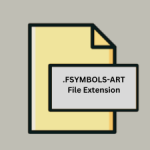.NWM File Extension

Sony NWM Display Screen File
| Developer | Sony |
| Popularity | |
| Category | Raster Image Files |
| Format | .NWM |
| Cross Platform | Update Soon |
What is an NWM file?
.NWM file extension is associated primarily with the software product NetWorker Management Console by EMC Corporation, a part of Dell Technologies.
This file format is used for managing backup and recovery operations within a networked environment.
The NetWorker Management Console allows administrators to configure, control, and monitor the NetWorker servers and clients across various platforms.
More Information.
NetWorker was introduced in the 1990s, evolving through the years to adapt to changing technology landscapes. The initial purpose of the .NWM file was to store configuration and management data for NetWorker.
This includes information about backup schedules, client-server configurations, and other metadata essential for the management of backup operations.
With advancements in networking and storage technologies, the structure and capabilities of .NWM files have been enhanced to offer more robust and scalable solutions for data management.
Origin Of This File.
The .NWM file format originates from EMC Corporation’s NetWorker software, which is a suite designed for the backup and recovery of data across a network.
EMC, recognized for its data storage and information security products, introduced NetWorker to address the growing needs of businesses to protect and manage their data efficiently.
File Structure Technical Specification.
.NWM file is structured to store configuration and operational data in a format that is both human-readable and machine-processable.
This dual nature ensures that while the file can be edited manually if needed, it is primarily interacted with through the NetWorker Management Console interface.
The file structure typically includes:
- Header Information: Identifies the file type, version, and other metadata.
- Configuration Data: Details about the network setup, client and server information, backup devices, and schedules.
- Operational Data: Runtime information, logs, and history of backup operations.
Technical specifications may vary depending on the version of NetWorker and the specific requirements of the network environment.
How to Convert the File?
.NWM files, associated with the NetWorker Management Console, are not typical document files that you would convert from one format to another like PDFs or text documents.
They are specialized files meant to be used within the EMC NetWorker environment for managing backup and recovery operations. As such, they are designed to be created, read, and manipulated by NetWorker software.
If you need to migrate .NWM files or integrate their data into another system, you would typically follow a process of data export or backup, rather than a direct file conversion. Here’s how you might approach it:
- Data Export: Use the NetWorker Management Console to export configuration or operational data. This process usually involves generating reports or summaries in standard formats like CSV or JSON, which can be used by other systems.
- Backup and Restore: If you’re migrating to a new NetWorker system, use the backup and restore functionality to transfer your .NWM files. This ensures that all your configurations and data are preserved and transferred accurately.
- Scripting and Automation Tools: For advanced users, scripting and automation tools provided by NetWorker (like nsradmin) can be used to extract specific data or configurations from .NWM files for use in other contexts.
Advantages And Disadvantages.
Advantages:
- Centralized Management: .NWM files allow centralized management of backup operations, making it easier to monitor and control large networked environments.
- Scalability: As network needs to grow, .NWM files and the NetWorker system can scale to manage increasing amounts of data and more complex network structures.
- Compatibility: NetWorker supports a wide range of platforms, ensuring that .NWM files can be utilized across diverse IT environments.
Disadvantages:
- Complexity: Managing .NWM files and the NetWorker system may require specialized knowledge, making it less accessible for smaller organizations or those without dedicated IT support.
- Cost: NetWorker is a commercial product, and its cost may be a barrier for some organizations.
How to Open NWM?
Open In Windows
- Installation: Download and install the NetWorker Management Console from the official Dell Technologies website.
- Opening the File: Locate your .NWM file in the file explorer, right-click on it, and choose “Open with” followed by selecting the NetWorker Management Console application. If the .NWM file associations are set correctly, you might be able to double-click to open directly.
Open In Linux
- Installation: Install the NetWorker software package through your distribution’s package manager or by downloading it from the official source.
- Using the Console: If you have a GUI environment, and the NetWorker Management Console is installed, you can open .NWM files similar to Windows.
- Command Line: More commonly in Linux environments, you would use command-line tools provided by NetWorker to interact with .NWM files. Commands will vary based on what you are trying to achieve (e.g., monitoring backups, changing configurations).
Open In MAC
- Installation: Install the NetWorker Management Console from Dell Technologies, ensuring you download the version compatible with macOS.
- Opening the File: Similar to Windows, you can open .NWM files by right-clicking and selecting the NetWorker Management Console, or possibly by double-clicking the file if associations are set.
Open In Android
Open In IOS
Open in Others
- Check Compatibility: Ensure that there is support for EMC NetWorker or similar management software.
- Installation: If supported, install the necessary software components.
- Access: Access the .NWM files using the provided tools or interfaces. This may involve specialized software or command-line tools specific to the operating system or environment.













